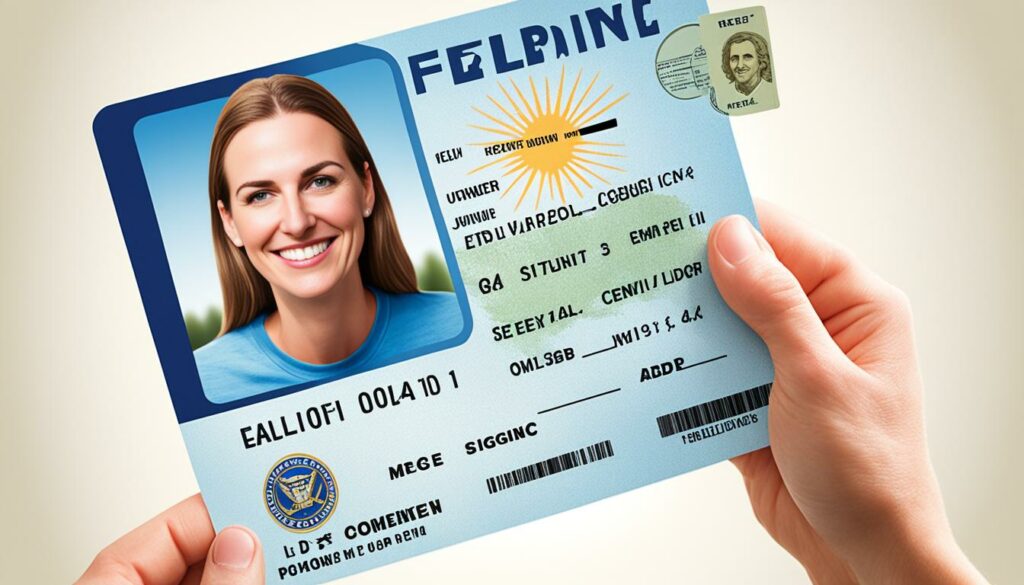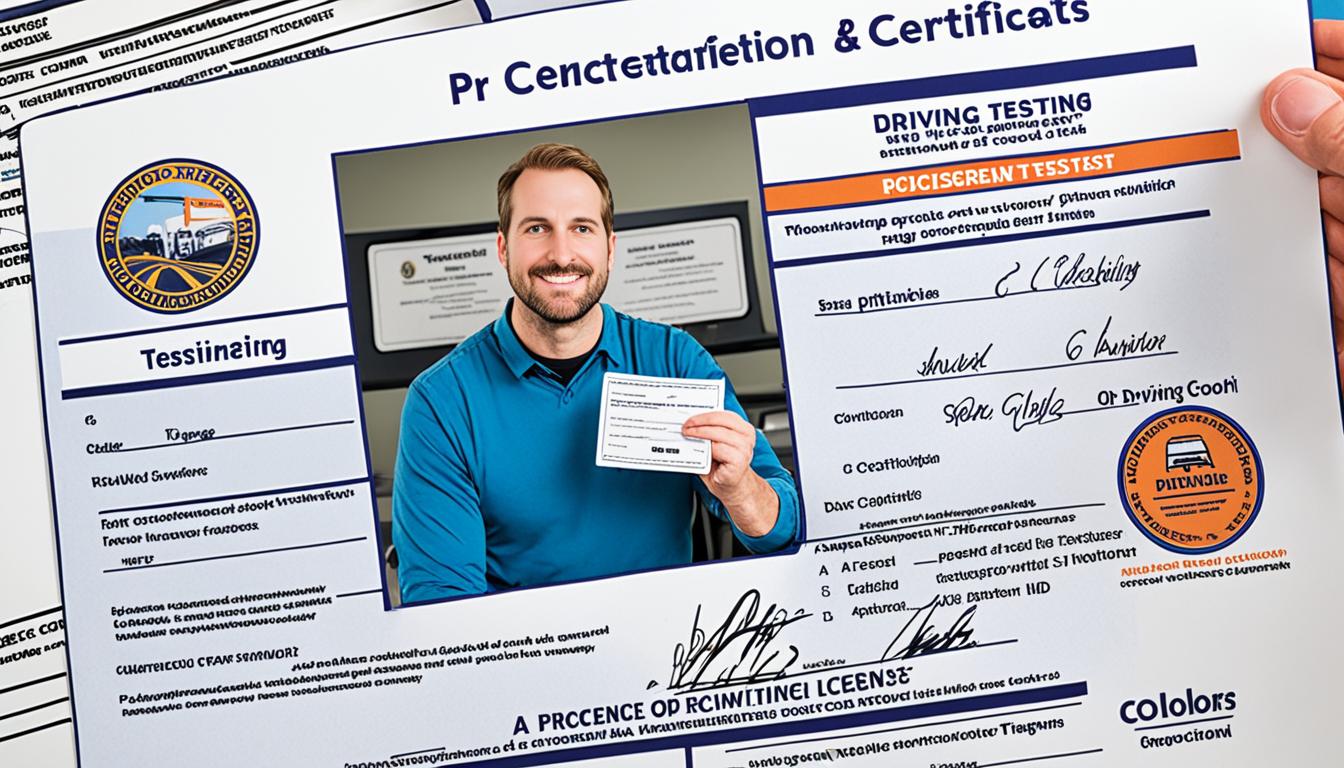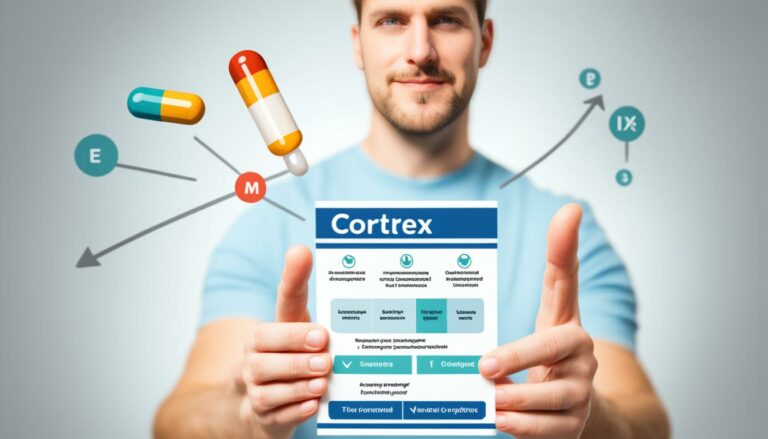Requirements to Get a Driver’s License Unveiled
Are you ready to hit the road? Before you can get behind the wheel and embark on your driving journey, there are certain requirements you need to meet to obtain a driver’s license. From age limits to documentation and tests, let’s explore the essential steps and prerequisites for obtaining a driver’s license in the United States.
Key Takeaways:
- Obtaining a driver’s license in the United States requires meeting specific requirements.
- Age limits, documentation, tests, and training are among the key factors.
- Each state may have its own variations and additional initiatives.
- Stay prepared and patient throughout the application process.
- Secure identification documents are essential for fraud prevention.
Age Requirements for a Driver’s License
When it comes to obtaining a driver’s license, the age requirements vary depending on the state. Most states allow individuals to start applying for a learner’s permit at the age of 15 or 16. This permit allows them to practice driving under certain restrictions. After holding the learner’s permit for a designated period, typically around 6 months to a year, they become eligible to apply for a driver’s license.
During the learner’s permit phase, new drivers are required to complete a certain number of practice hours and may be required to complete a driver’s education course. These requirements ensure that young drivers gain sufficient experience and knowledge before transitioning to a full driver’s license.
It’s important to note that some states have implemented graduated licensing programs, which impose additional restrictions on new drivers under a certain age. These restrictions may include nighttime driving limitations, passenger restrictions, or mandatory supervised driving hours. Graduated licensing programs aim to gradually introduce young drivers to the complexities of the road and help them develop safe driving habits.
Remember: Always check your state’s specific age requirements and regulations for obtaining a driver’s license.
Documentation Needed for a Driver’s License
When applying for a driver’s license in the United States, it is important to have the necessary documentation to prove your identity and residency. Providing the required documents is an essential step in the application process. Here are the common documents that you may need to present:
| Required Documents |
|---|
| Birth Certificate or Passport |
| Social Security Card or Tax Document with Full Social Security Number |
| Two Verifications of Address: |
| – Current Driver’s License or State ID |
| – Vehicle Registration |
| – Voter Registration Card |
| – Utility Bill |
| If Name Change, Additional Proof: |
| – Marriage License or Court Document |
These documents help establish your identity, residency, and eligibility for a driver’s license. It is recommended to bring original copies or certified copies of these documents when visiting the Department of Motor Vehicles (DMV) to ensure a smooth application process.
Remember, the specific required documents may vary depending on the state you are applying in. It is essential to check the requirements of your state’s DMV website or contact them directly for accurate and up-to-date information.
Why Documentation is Important
The documentation required for a driver’s license serves several purposes. Firstly, it helps confirm your identity and verifies that you are who you claim to be. This is crucial for maintaining the integrity of the driver’s license system and ensuring that only eligible individuals receive licenses.
Additionally, the documentation helps establish your residency. This is important because driver’s license requirements can differ between states, and verifying residency ensures that you meet the specific criteria set by your state’s DMV.
Lastly, the documentation assists in maintaining accurate records and preventing fraud. By requiring individuals to provide various proofs of identification and address, the DMV can maintain reliable records and minimize the risk of identity theft or misuse of driver’s licenses.
Tests for a Driver’s License
To obtain a driver’s license, individuals usually have to pass both a written test and a road test. These tests are designed to assess the applicant’s understanding of traffic laws, signs, and safe driving practices, as well as their ability to operate a vehicle safely in various driving conditions.
The written test is typically taken before the road test and requires a comprehensive knowledge of traffic rules, regulations, and road signs. It may also cover topics such as defensive driving techniques and proper vehicle maintenance. Applicants must study the driver’s manual provided by the Department of Motor Vehicles (DMV) and prepare for questions based on its contents.
The road test is conducted by a licensed examiner and evaluates the applicant’s driving skills firsthand. During the road test, the examiner will assess the individual’s ability to perform various maneuvers, such as parallel parking, lane changes, and turning at intersections. Additionally, the examiner will observe the applicant’s adherence to traffic laws, awareness of their surroundings, and ability to make safe decisions while driving.
Some states may also require a vision test as part of the driver’s license application process. This test ensures that applicants have sufficient visual acuity and peripheral vision to operate a vehicle safely.
It’s important to note that the specific requirements and procedures for the written and road tests may vary by state. Applicants should consult their state’s DMV website or contact their local DMV office to obtain detailed information regarding the driver’s license testing process.
“Passing the driver’s license tests is an essential step towards obtaining a driver’s license. It demonstrates that the applicant has the necessary knowledge and skills to navigate the roads safely. By thoroughly preparing for these tests, individuals can increase their chances of success and ensure they are well-equipped to become responsible and competent drivers.”
Written Test Content
The content of the written test may include but is not limited to:
- Traffic laws and regulations specific to the state
- Understanding of road signs, signals, and markings
- Safe driving practices and techniques
- Sharing the road with pedestrians, cyclists, and other motorists
- Effects of alcohol and drugs on driving performance
- Vehicle maintenance and safety
Preparing for the Tests
Preparing for the driver’s license tests requires diligent studying and practice. It is crucial to review the driver’s manual provided by the DMV, as it contains the necessary information for the written test. Additionally, taking practice tests can help familiarize applicants with the format and content of the actual exam.
For the road test, practicing driving skills under various conditions and scenarios is essential. Applicants should aim to gain experience in different traffic situations, such as heavy traffic, residential areas, highways, and parking lots. It may also be beneficial to seek guidance from a professional driving instructor or enroll in a driver’s education program to refine driving skills and gain additional knowledge.
By investing time and effort in preparation, individuals can approach the driver’s license tests with confidence and increase their chances of success.
| State | Written Test Pass Rate | Road Test Pass Rate |
|---|---|---|
| New York | 78% | 65% |
| California | 80% | 72% |
| Texas | 75% | 68% |
| Florida | 82% | 70% |
| Ohio | 85% | 78% |
Training Programs and Courses

When it comes to obtaining a driver’s license, many states provide driver’s education programs and training courses that are designed to offer new drivers additional instruction and practice. These programs can be valuable in preparing individuals for the responsibilities of driving on the road.
Driver’s education programs often encompass a combination of classroom instruction, driving simulations, and practical training behind the wheel with a certified instructor. These comprehensive courses aim to equip new drivers with the knowledge, skills, and confidence necessary to navigate various driving scenarios and make safe decisions on the road.
Completing a driver’s education program may be a requirement in certain states, while in others, it may lead to benefits such as earlier eligibility for a driver’s license or reduced insurance rates. These programs are specifically tailored to address the specific nuances of individual state laws and regulations, enhancing the overall driving experience for new motorists.
“Driver’s education programs provide novice drivers with the essential skills and knowledge needed to become safe and responsible drivers. These courses are designed to instill good driving habits, promote defensive driving techniques, and raise awareness of traffic rules and regulations. By combining theoretical classroom instructions, interactive driving simulations, and hands-on training, driver’s education programs create a well-rounded approach to driver training.”
Driver’s training courses often include practical components where students actually get behind the wheel and practice driving under the guidance of experienced instructors. This hands-on experience allows students to refine their driving skills, learn how to handle different road conditions, and gain confidence in their abilities.
Overall, driver’s education programs and training courses play a crucial role in ensuring that new drivers are equipped with the knowledge, skills, and confidence needed to navigate the roads safely. These programs help instill responsible driving habits, reinforce traffic laws, and promote defensive driving techniques for a lifetime of safe driving.
| Benefits of Driver’s Education Programs | Benefits of Driver’s Training Courses |
|---|---|
|
|
Benefits of Driver’s Education Programs and Driver’s Training Courses
REAL ID Compliance
The REAL ID Act, passed by Congress in 2005, establishes nationwide standards for secure identification documents, including driver’s licenses. It aims to enhance the security and integrity of identification cards and prevent identity fraud.
Beginning in May 2025, individuals will be required to possess a REAL ID-compliant driver’s license or another form of federally acceptable identification to board domestic commercial flights or access certain federal buildings and military installations that require ID.
REAL ID compliance is optional in some states, but opting into the program ensures that your driver’s license meets the federally mandated security standards. It affirms that your identification can be readily verified and trusted by relevant authorities.
In addition to a REAL ID-compliant driver’s license, other forms of federally acceptable identification include a valid passport or military ID. These alternatives serve as valid proof of identity and can be used in situations where a REAL ID-compliant driver’s license is not available.
It’s important to note that not all individuals will need a REAL ID-compliant driver’s license. Exemptions typically include individuals who do not plan to utilize commercial air travel or require access to federal buildings or military installations.
To ensure compliance with REAL ID requirements and the ability to conveniently travel within the United States, it is recommended that individuals obtain a REAL ID-compliant driver’s license or possess an alternative form of federally acceptable identification.
Upgraded Security Features

Many states have been implementing new driver’s licenses with enhanced security features to ensure the authenticity and integrity of the documents, preventing counterfeiting, fraud, and identity theft.
These upgraded security features comply with the standards set by organizations like the American Association of Motor Vehicle Association (AAMVA).
Some of the advanced security features incorporated into the new driver’s licenses include:
- Guilloche Security Design: Intricate and complex patterns that are challenging to reproduce, making it difficult for counterfeiters to replicate the design accurately.
- Optically Variable Ghost Portrait and Variable Data with UV: Elements that change in appearance when viewed from different angles or under ultraviolet light, enhancing the security and making it easier for authorities to identify genuine licenses.
- Dynamic Look Through Element (DLTE): Transparent elements with complex visual effects that create an additional layer of security, making it harder to forge.
These new designs and security features aim to improve fraud prevention, deter illegal activities, and safeguard the personal information of license holders.
State-Specific Initiatives

When it comes to driver’s licenses, each state has its own set of initiatives and programs in place. It’s important to be aware of these state-specific requirements and options when applying for a driver’s license. Let’s take a closer look at two examples: Maryland and Pennsylvania.
Maryland Driver’s License
In Maryland, there has been a recent introduction of a highly secure driver’s license and identification card. These new licenses feature engraved images of important state symbols, adding an extra layer of security and authenticity to the document. With these enhanced security measures, Maryland is ensuring the integrity of their driver’s licenses and protecting residents from identity theft.
Pennsylvania Driver’s License
In Pennsylvania, individuals have the option to obtain a REAL ID-compliant driver’s license. While not mandatory, a REAL ID-compliant license provides individuals with the ability to use their driver’s license as a federally acceptable identification document for domestic flights and entry into certain federal buildings or military installations that require ID. Pennsylvania’s initiative to offer REAL ID-compliant licenses gives residents a convenient option for meeting federal identification requirements.
Remember, each state may have its own unique initiatives and programs related to driver’s licenses. It’s crucial to stay informed about the specific requirements and options implemented by the state where you are applying for a driver’s license.
Exemptions from REAL ID Requirements

Not everyone will need a REAL ID-compliant driver’s license. There are exemptions from the REAL ID requirements that apply to certain individuals who do not plan to fly anywhere or enter specific federal facilities.
Exemptions from the REAL ID requirements include:
- Individuals who do not plan to fly domestically
- Those who do not intend to enter military bases
- Individuals who do not need access to federal courthouses
- Those who do not need access to prisons
It’s important to note that having a current passport can serve as a valid identification for domestic travel, regardless of REAL ID compliance. If you already possess a passport, you can use it as an alternative form of identification for flying within the United States.
Understanding the exemptions and alternative identification options can help you navigate the federal requirements for ID and determine whether obtaining a REAL ID-compliant driver’s license is necessary for your specific travel and access needs.
Preparation and Wait Times
When preparing to apply for a driver’s license, it is advisable to make an appointment in advance and gather all the necessary documentation. By scheduling an appointment, you can save time and ensure that you are attended to promptly. Additionally, having all the required documents ready will help streamline the application process and minimize any potential delays. Remember, being prepared is key to a smooth application experience!
Wait times at the Department of Motor Vehicles (DMV) can vary depending on the location and time of day. To avoid long wait times, it is recommended to visit the DMV during non-peak hours or on weekdays when there is typically less foot traffic. Some DMVs also offer online systems where you can check wait times in real-time before visiting in person.
“Preparation is the key to success.”
Did you know?
The DMV is continuously working to improve their services and reduce wait times. They are hiring more staff, implementing technological advancements, and optimizing their processes to enhance efficiency.
Preparing in advance and staying informed about wait times can help you manage your expectations and make the application process more seamless. Remember, patience is essential, as the DMV staff is dedicated to serving each applicant diligently.
| City | Wait Time |
|---|---|
| New York City | Approximately 2 hours |
| Los Angeles | Approximately 1.5 hours |
| Chicago | Approximately 1 hour |
| Houston | Approximately 2.5 hours |
| Miami | Approximately 2 hours |
These wait times are approximate and can vary depending on various factors. It’s always best to check with your local DMV for the most up-to-date information. You can also keep an eye on their website or social media channels for any announcements or updates regarding wait times.
Importance of Secure IDs
The implementation of secure driver’s licenses and identification cards is crucial in preventing identity fraud and counterfeiting. Reliable and authentic identification documents are essential for law enforcement and other authorities to verify a person’s identity. State governments and motor vehicle administrations are continually striving to enhance security features and comply with federal regulations like the REAL ID Act to ensure the integrity of identification documents.
In recent years, there has been an increasing focus on strengthening the security of driver’s licenses and identification cards to combat identity theft and fraudulent activities. These secure IDs incorporate advanced security features, making them more resistant to tampering or counterfeiting.
The introduction of enhanced security technologies in driver’s licenses helps to prevent unauthorized duplication and counterfeiting. These security features may include holograms, UV inks, microprinting, and other visible and invisible elements that are difficult to replicate. By utilizing these cutting-edge security measures, authorities can more effectively distinguish between genuine identification documents and fraudulent ones.
“Secure identification documents play a crucial role in safeguarding personal identities and preventing identity fraud. By implementing robust security measures, authorities can protect individuals, businesses, and society as a whole.”
Identity Fraud Prevention
One of the primary benefits of secure identification documents is the prevention of identity fraud. Identity fraud occurs when someone steals another person’s personal information to commit fraudulent activities, such as opening accounts, accessing financial resources, or engaging in illegal activities under the stolen identity.
Secure IDs with advanced security features make it considerably more challenging for fraudsters to replicate or manipulate identification documents. The incorporation of unique identifiers, such as holographic images or digital watermarks, helps to verify the authenticity of the document and the legitimacy of the holder’s identity.
Additionally, secure identification documents often incorporate tamper-evident features, making any attempts at altering or modifying the document evident. This further enhances the reliability and trustworthiness of the identification process.
Counterfeit Prevention
Counterfeiting refers to the production or distribution of fraudulent documents or goods with the intent to deceive or defraud. The implementation of secure IDs significantly reduces the risk of counterfeiting driver’s licenses and identification cards. The advanced security features make it extremely challenging for counterfeiters to replicate or forge the documents with the same level of authenticity.
Counterfeit prevention measures adopted in secure identification documents may include specialized printing techniques, unique material compositions, and intricate security patterns. These features, often combined with the use of advanced technologies, serve as robust deterrents to counterfeiting.
| Benefits of Secure IDs | Identity Fraud Prevention | Counterfeit Prevention |
|---|---|---|
| Enhanced security features | Prevents unauthorized use of personal information | Reduces the risk of fraudulent duplication |
| Tamper-evident design | Difficult to alter or manipulate identification documents | Evident signs of tampering discourage counterfeiters |
| Unique identifiers (holograms, digital watermarks, etc.) | Increases the authenticity and reliability of identification | Challenging to replicate or forge |
| Specialized printing techniques and security patterns | Highly resistant to fraudulent replication | Deters counterfeiters with intricate and hard-to-replicate designs |
The implementation of secure driver’s licenses and identification cards is an essential component of a comprehensive approach to identity fraud and counterfeiting prevention. By continuously enhancing security features and adhering to federal regulations, state governments aim to ensure the integrity and authenticity of identification documents, promoting public safety and safeguarding individuals from the risks associated with identity theft and fraudulent activities.
Conclusion
Obtaining a driver’s license involves fulfilling essential requirements, including age limits, document submission, test completion, and potential training programs. These requirements may vary from state to state, so it’s important to understand the specific initiatives and regulations in your area. The transition towards secure driver’s licenses, such as those compliant with the REAL ID Act, serves to enhance security, prevent fraud, and protect individuals’ personal information.
When pursuing a driver’s license, it is crucial to prepare ahead of time and gather all the necessary documentation. This includes proof of identity, residency, and social security number. Additionally, most states require individuals to pass a written test and a road test to demonstrate their knowledge of traffic laws and driving skills.
During the application process, it’s important to remain patient as wait times at the Department of Motor Vehicles (DMV) can vary. Making an appointment in advance and checking online systems for wait time updates can help alleviate potential frustrations. Remember, obtaining a driver’s license is a significant milestone, granting you the freedom and independence to navigate the roads responsibly and confidently.
FAQ
What are the requirements to get a driver’s license?
The requirements to get a driver’s license include meeting age limits, providing necessary documentation, passing tests, and potentially completing training programs.
What are the age requirements for a driver’s license?
The age requirements for a driver’s license vary by state. Generally, individuals can start applying for a learner’s permit at around 15 or 16 years old.
What documentation is needed for a driver’s license?
Documentation needed for a driver’s license typically includes proof of identity, residency, and social security number. This can include a birth certificate, social security card, and verifications of address.
What tests are required for a driver’s license?
To obtain a driver’s license, individuals usually have to pass a written test, a road test, and potentially a vision test to assess knowledge, driving skills, and eyesight.
Are there any training programs or courses for obtaining a driver’s license?
Many states offer driver’s education programs and training courses that provide additional instruction and practice to new drivers, which can lead to benefits such as earlier eligibility or reduced insurance rates.
What is REAL ID compliance?
REAL ID compliance refers to meeting the federally mandated security standards for identification documents, including driver’s licenses. Beginning in May 2025, a REAL ID-compliant driver’s license or another federally acceptable identification will be required for domestic flights and entry to certain federal buildings and military installations.
What upgraded security features do new driver’s licenses have?
New driver’s licenses often include enhanced security features such as guilloche security designs, optically variable ghost portraits, and dynamic look through elements to prevent counterfeiting, fraud, and identity theft.
Are there any state-specific initiatives for driver’s licenses?
Yes, states may have their own specific initiatives and programs regarding driver’s licenses. For example, Maryland has introduced a highly secure driver’s license with engraved images of state symbols, while Pennsylvania offers the option for REAL ID-compliant licenses but does not make it mandatory.
Who is exempt from REAL ID requirements?
Exemptions from REAL ID requirements typically include individuals who do not plan to fly domestically or enter certain federal facilities. Those with a current passport can also use it as a valid identification for domestic travel.
How should I prepare for a driver’s license application and what are the wait times?
It is advisable to make an appointment in advance and gather all the necessary documentation when preparing for a driver’s license application. Wait times at the Department of Motor Vehicles (DMV) can vary, and some DMVs have online systems to check wait times before visiting in person.
Why is having secure identification important?
Secure identification documents are crucial in preventing identity fraud, counterfeiting, and ensuring the authenticity and integrity of personal information. Enhanced driver’s license security features help law enforcement and authorities verify a person’s identity.
Can you summarize the essential requirements for obtaining a driver’s license?
The essential requirements for obtaining a driver’s license include meeting age limits, providing necessary documentation, passing tests, and potentially completing training programs. It is also important to be aware of state-specific initiatives and the REAL ID compliance requirements.
Source Links
- https://www.dmv.pa.gov/Driver-Services/Driver-Licensing/Pages/New-Driver-License-Design.aspx
- https://www.thalesgroup.com/en/markets/digital-identity-and-security/government/customer-cases/maryland-driving-license
- https://www.wral.com/story/if-your-driver-s-license-doesn-t-have-the-star-you-may-need-to-act-quickly/20461372/







